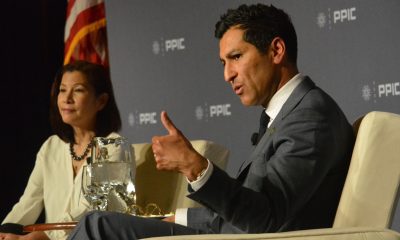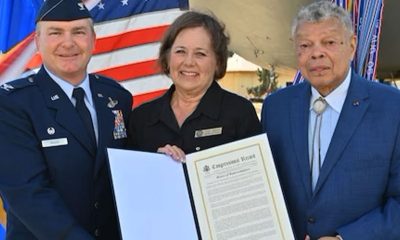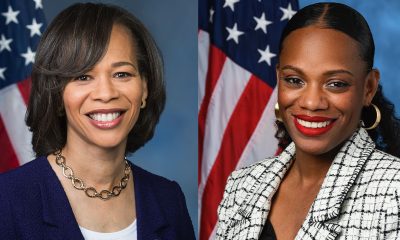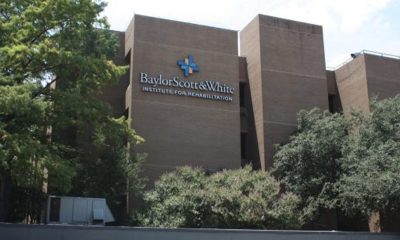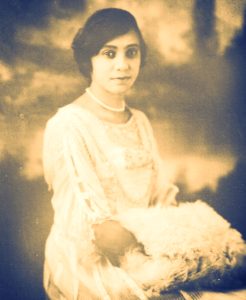Health
Clean Power Plan Affects Black Quality of Life
By Jazelle Hunt
NNPA Columnist
WASHINGTON (NNPA) – When Cheeraz Gormon received an invitation to lobby in Washington on behalf of President Barack Obama’s Clean Power Plan with environmental legal advocacy nonprofit, Earthjustice, she was bewildered.
“You couldn’t have told me even last month that I would be on Capitol Hill actually talking about the Clean Power Plan. I was like, ‘Wait, I don’t deal with climate change or any of that,’ I don’t have any expertise in it,” said Gormon, an international spoken-word artist, activist, documentarian, and award-winning advertising copywriter.
She felt if anyone could use an advertising makeover, it was environmentalists. Gormon always thought of them as people who chained themselves to redwood trees.
“But it was always an in-family conversation. Why there’s no trees in our neighborhood, why we have to live near all these factories that [are closed], the different smells, what they’re spraying in the air, saying they’re spraying for mosquitoes. After I accepted the invitation, I went back and connected the dots,” Gormon said.
In her hometown of St. Louis, where half the population is Black, the Meramec coal-powered electricity plant that sits on the Mississippi River pumped an average of 20,000 tons of sulfur dioxide into the air per year between 2007 and 2010, according to an NAACP report. This byproduct contributes to acid rain, as well as chronic heart and respiratory diseases such as COPD, asthma, and emphysema.
The power company has not installed a sulfur dioxide monitor at this plant, but has spent $600 million on purifying “scrubbers” at its St. Charles County facility, west of St. Louis near the airport, where the population is 88 percent White.
In Missouri, 83 percent of the electricity comes from burning coal, which higher than the national figure of 50 percent. These coal power plants are the nation’s and the world’s chief source of air pollution. The Clean Power Plan – a component of the latest update to the Clean Air Act, which began in the 1950s – requires states to reduce their coal power plants’ emissions by 30 percent of 2005 levels, over the next five years.
Neighborhoods that border power plants and refineries are known as “fenceline communities,” and are almost always low-income, of color, or both.
The NAACP report grades and ranks the nation’s coal-fired power plants based on how harmful they are to communities of color. Among the top 12 most hazardous plants, Black people accounted for 76 percent of the surrounding populations. Another study by the University of Minnesota found that people of color are exposed to 38 percent higher levels of nitrogen dioxide – a gas that irritates and weakens airways and aggravates existing heart and respiratory issues – than Whites. For families living in fenceline communities, such as Port Arthur, Texas, Dearborn, Mich., and Pittsburgh, Pa., cancers, heart, and lung conditions strike across generations.
Satoria Briggs, activist and member of the Hip Hop Caucus, knows that from first-hand experience.
“Moving into the Southeast side of Chicago…there’s things I can’t do because of my activity-induced asthma. But it’s activity-induced – it shouldn’t just be there. When there’s piles of petcoke sitting around my neighborhood, that’s directly affecting me,” Briggs explained. “BP has a huge refinery where they have petcoke piles. The cancer rate is higher in this area. You’re being affected. And because you’re not going to say anything much, they’ll throw you this and that.”
Petcoke is a powdery black byproduct of the oil refining process that can be reused as a fuel in some cases. Some oil companies keep it outside in neat exposed mounds, where the dust is easily whisked into the wind and air each day. Briggs recalls seeing schoolchildren arrive to school lightly dusted in it.
Last year, the Hip Hop Caucus launched the People’s Climate Music project and the Home album, featuring tracks about climate change from artists such as Common, Raheem DeVaughn, Ne-Yo and many more. Earthjustice invited Briggs to lobby as a representative of the Caucus.
The finishing touches on the Environmental Protection Agency’s Clean Power Plan are expected next month, but the plan has drawn fierce objections from the beginning. Concerns center on energy companies’ profits and the financial burden of meeting tighter standards; states rights and the EPA’s limited power in creating or enforcing rules covering the energy business; and the political struggle between state legislators and local economies lubricated with coal and oil money.
The plan mandates that coal-fire power plants must choose from four methods to reduce their carbon emissions. They can upgrade their facilities and/or practices with state-of-the-art public health-friendly equipment; convert to natural gas, nuclear, or renewable energy; or switch customers to energy efficiency programs and practices.
States will be required to provide the federal government with a proposal on how they will use these methods to comply with the Clean Power Plan. States that refuse or submit inadequate plans will have to comply with a cookie-cutter plan from the federal government.
Critics assert that the plan violates the Constitution by giving a federal agency power over a state function. They also argue that it hinders private profits without providing “due compensation.”
Some feel the plan is unnecessary.
Over the past several years, some companies have been voluntarily reducing their impact on the air and surrounding neighborhoods. Some critics say that these efforts would have reached the Clean Power Plan’s goal in time, without federal intervention. Further, even if the plan is successful, it will do little to impact climate change. The EPA concedes that the proposed reduction pales in comparison to the level of greenhouse gases produced across Asia.
But as state legislators, energy companies, pundits, and the White House squabble, Blacks, Latinos, and Native Americans disproportionately suffer the effects.
“We can’t keep thinking that this environment stuff is separate from your asthma, or your ADD, or your COPD. All this stuff comes from the environment,” Briggs says.
“When I was first asked to do this, I was not super knowledgeable on everything. But I have 126 first cousins on my mom’s side. I can say 60 percent of them have asthma. You don’t have to actually know all the logistics. You should just know that if you can’t breathe, that’s an issue.”
Community
For Cervical Cancer Month, Medical Community Focused on Education
January was Cervical Cancer Awareness Month. Physicians, advocates and others in the medical community commemorated the month by raising awareness about a form of cancer they say is highly preventable and treatable. Cervical cancer is caused by a virus called the human papillomavirus (HPV) and it develops slowly over time but can be prevented with proper care in girls as young as 13 years old.

By Magaly Muñoz
January was Cervical Cancer Awareness Month.
Physicians, advocates and others in the medical community commemorated the month by raising awareness about a form of cancer they say is highly preventable and treatable.
Cervical cancer is caused by a virus called the human papillomavirus (HPV) and it develops slowly over time but can be prevented with proper care in girls as young as 13 years old.
Sonia Ordonez, an OBGYN and gynecology surgeon at Kaiser Permanente, stated that as soon as people with cervixes reach the maturity reproductive age, they should start taking preventative measures like getting the HPV vaccine. The vaccine involves a series of two-doses for people aged 9 through 14 or three-doses for people 15 through 45 years old.
“I see a lot of young women who can’t remember or may not have gotten [the vaccine] when they were younger, or maybe got one, but we can give them the series of vaccines and restart at any point in time,” Ordonez said.
She said that cervical cancer is not the only cancer caused by HPV. Strains of the virus can also lead to throat, anal and penile cancers.
Screening is also an effective way to check for cervical cancer and should be done every three years after someone turns 21, doctors recommend. It is best to start as early as possible to catch occurrences early.
Ordonez said that this cancer is also more likely found in people of color and has led to more deaths overall.
A Mayo Clinic article published last month stated that Black women are more likely to be diagnosed and die of cervical cancer, compared to White women in the U.S.
2,000 Black women are diagnosed every year with cervical cancer and 40% die as a result.
“This disparity is not due to genetic differences among White, Black or Hispanic women, but rather related to systemic racism, access to healthcare and socioeconomic factors,” Dr. Olivia Cardenas-Trowers, a Mayo Clinic urogynecologist, said in the article.
Ordonez stated that immigrant women are also highly susceptible to the cancer, as many Latin American countries may not have accessibility to screenings or lack of insurance makes it harder for them to get tested.
Hispanic women are 40% more likely to be diagnosed with cervical cancer, and 30% more likely to die from it, as compared to non-Hispanic White women, according to the Office of Minority Health.
Family medicine physician, Joy Anyanwu, stated that the pandemic contributed to hesitancy about getting cervical cancer screenings among some women. Other factors are people’s aversion to vaccines, parents not wanting to believe that their children are or will become sexually active, and doubt about the overall effectiveness of the vaccine.
“The vaccine is very safe — over 97% effective in preventing cervical cancer,” Anyanwu said. “Even if you aren’t having sex, the earlier you start would actually help.”
Anyanwu said she understands that parents might not want to ask questions about their children’s reproductive health, but it’s a mindset that can be a barrier to having important conversation about prevention or care.
To keep families their families and communties healthy, the doctor emphasized that people should prioritize keeping up with their vaccine series and going to screenings every year.
Antonio Ray Harvey
Sacramento Lawmakers Step Up Push for “Smart Solutions” on Crime, Public Safety
Assemblymember Tina McKinnor (D-Inglewood) and Sen. Lola Smallwood-Cuevas (D-Ladera Heights), both members of the California Legislative Black Caucus (CLBC), have joined other lawmakers and criminal justice reform advocates to address public safety in the state. On April 2, CLBC members gathered outside the State Capitol for the unveiling of the #SmartSolutions Public Safety Policy Platform, a package of 30 bills that addresses the top concerns of retailers, retail workers, the fentanyl crisis, and support for victims and survivors of crime.
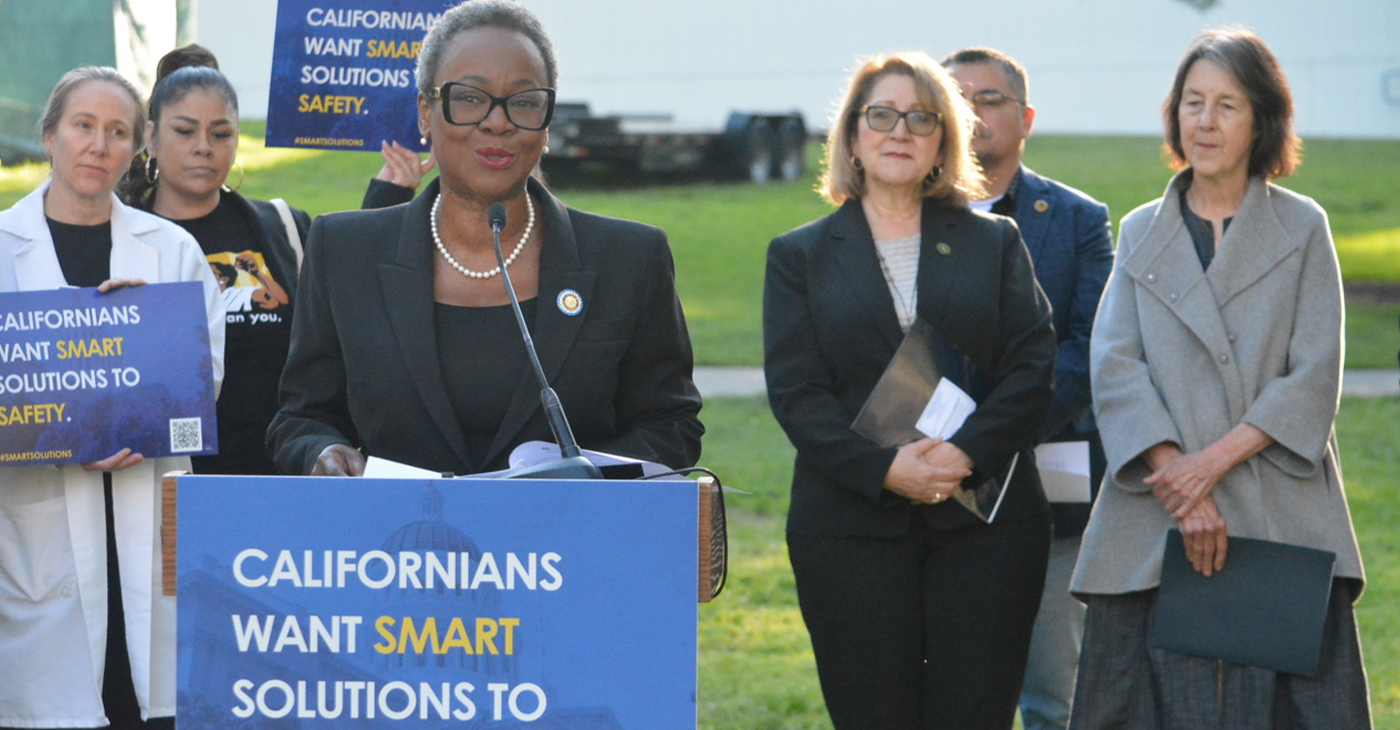
By Antonio Ray Harvey, California Black Media
Assemblymember Tina McKinnor (D-Inglewood) and Sen. Lola Smallwood-Cuevas (D-Ladera Heights), both members of the California Legislative Black Caucus (CLBC), have joined other lawmakers and criminal justice reform advocates to address public safety in the state.
On April 2, CLBC members gathered outside the State Capitol for the unveiling of the #SmartSolutions Public Safety Policy Platform, a package of 30 bills that addresses the top concerns of retailers, retail workers, the fentanyl crisis, and support for victims and survivors of crime.
“Instead of being tough on crime, we need to be smart on crime,” Smallwood said at the press briefing. “I am not saying that we’re not going to be holding folks accountable for the actions that they take. But we will not rely on incarceration as a solution.”
McKinnor, Smallwood-Cuevas, a coalition of advocates, addiction treatment experts, and Yurok Tribal leaders joined Sen. Nancy Skinner (D-Berkeley), and Assemblymember Eloise Gómez Reyes (D-Colton) at the press conference organized to promote legislative solutions that ensure safety and justice.
Organizers say #SmartSolutions is an intersectional campaign that combats criminalization and mass incarceration by pushing for the redirection of state resources to fund housing, health care, schools, services for victims, and programs that reduce recidivism and promote accountability, beyond incarceration.
Opponents of the bills proposed in the #SmartSolutions campaign say their colleagues who support reform-focused strategies are looking the other way on crime and encouraging lawlessness.
For example, Assemblymembers Wendy Carillo (D-Boyle Heights), Carlos Villapudua (D-Stockton) and Mike Gipson (D-Carson) are supporting Assembly Bill (AB) 1990, legislation that would allow a peace officer to arrest shoplifters without a warrant or without witnessing the theft.
Assemblymember James Ramos (D-Highland) authored AB 1772 and introduced it in January. The legislation proposes sterner penalties for retail theft, particularly for repeat offenders.
The #SmartSolutions campaign is co-sponsored by Ella Baker Center for Human Rights, Smart Justice California, American Civil Liberties Union (ACLU) California Action, Californians for Safety and Justice, and Californians United for a Responsible Budget (CURB).
Smallwood recently introduced two bills she hopes will provide solutions to the escalating retail theft problem in the state. Senate Bill (SB) 1446 addresses theft, technology and job security in retail establishments and aims to minimize workplace violence, according to supporters. SB 1282 requires counties to expand the use of a diversion program for theft cases.
“Restorative Justice is the essential pillar of making our criminal justice system more fair, just, and equitable,” McKinnor said. “Restorative justice recognizes the trauma of victims and preparatory of crimes and provides a constructive space for victims to find healing.”
Dr. Amiee Moulin, founder of the California Bridge program and chief of the Division of Addiction Medicine at the University of California (UC) Medical Center, said drug “addiction and overdose” are taking a toll on patients, families and the community.
“I believe that California’s proposed legislation focused on expanding access to treatment is a crucial step towards saving lives,” Moulin said. “By removing barriers to care and embracing evidenced-based strategies we can provide patients the support they need to heal and recover.”
California Black Media
Stakeholders Warn Lawmakers of Expanding Aging Population; Older Black Californians Included
The California Commission on Aging (CCoA) hosted its second annual forum focused on challenges facing Californians over 65 years old. Titled “Aging and Disability Issues: What Legislative Staff Need to Know for 2024,” the virtual event was organized to bring awareness to lawmakers that California’s aging adults are living longer and to emphasize the importance of developing policy to support this growing population, according to organizers.

By Antonio Ray Harvey, California Black Media
The California Commission on Aging (CCoA) hosted its second annual forum focused on challenges facing Californians over 65 years old.
Titled “Aging and Disability Issues: What Legislative Staff Need to Know for 2024,” the virtual event was organized to bring awareness to lawmakers that California’s aging adults are living longer and to emphasize the importance of developing policy to support this growing population, according to organizers.
This year’s meeting included the perspectives of gerontologists and other subject-matter experts who provided data and insights critical to informing policy.
Former Assemblymember Cheryl Brown (D-San Bernardino), who chairs the CCoA’s Executive Committee, began the discussion.
“The landscape of California is changing. Aging is changing and it’s changing California,” Brown said. “Older adults are living longer, and the cohort is becoming more ethnically diverse, underscoring the need to develop culturally, appropriate services.”
The discussion encompassed a range of topics including planning for long-term care, assisted living, enhancing healthcare quality, technology use, services for senior adults with disabilities, state budget considerations, and the best policies and practices to help aging adults stay healthy, active, independent, and confident.
The CCoA acts as the principal advocate for older Californians and as a catalyst for change that supports and celebrates Californians as they advance in age. The CCoA advises the Governor and Legislature, along with state, federal, and local agencies on programs and services that affect senior adults.
Statewide organizations that participated in the event included LeadingAge California, Disability Rights California, California Foundation for Independent Living Centers, and California Collaborative for Long-Term Services and Supports.
In addition, representatives and staff members of Choice In Aging, Age Watch Newsletter, California Elder Justice Coalition, California Association of Area Agencies on Aging, and the California Long-Term Care Ombudsman Association were presenters during the 90-minute discussion.
“In California, we know that older adults are underserved and unserved relative to their needs,” CCoA Executive Director Karol Swartzlander said. “In stark terms, we know that 4% of older adults who need service actually receive services.”
According to the California Department of Aging (CDA), California’s aging population is expected to reach an estimated 4.5 million individuals ages 60 to 69 and 4.2 million senior adults ages 70- to 79 by the year 2040, based on information from CDA’s Master Plan for Aging.
Recognizing that the state’s 65-plus population is projected to grow to 8.6 million by 2030, Gov. Gavin Newsom issued an executive order calling for the development of the MPA.
Debbie Toth, from ChoiceInAging, said the MPA is a model of “how we can do better” to service the needs of older adults. ChoiceInAging, Toth said, “is going to be shopping accessible transportation and rate increases for adult day healthcare.
“But we need to have legislation to do it,” Toth told legislative staff members.
A 2016 California Health Report (CHR) revealed that by 2030, 18% of the state will be 65 or older. Projections in that study also indicated that 52% of these older adults would be from diverse minority groups but “no population is expected to be harder hit than African Americans,” the report stated.
-

 Activism4 weeks ago
Activism4 weeks agoOakland Post: Week of March 20 – 26, 2024
-

 #NNPA BlackPress3 weeks ago
#NNPA BlackPress3 weeks agoCOMMENTARY: D.C. Crime Bill Fails to Address Root Causes of Violence and Incarceration
-

 #NNPA BlackPress3 weeks ago
#NNPA BlackPress3 weeks agoMayor, City Council President React to May 31 Closing of Birmingham-Southern College
-

 #NNPA BlackPress3 weeks ago
#NNPA BlackPress3 weeks agoCOMMENTARY: Lady Day and The Lights!
-

 #NNPA BlackPress3 weeks ago
#NNPA BlackPress3 weeks agoFrom Raids to Revelations: The Dark Turn in Sean ‘Diddy’ Combs’ Saga
-

 #NNPA BlackPress3 weeks ago
#NNPA BlackPress3 weeks agoBaltimore Key Bridge Catastrophe: A City’s Heartbreak and a Nation’s Alarm
-

 #NNPA BlackPress3 weeks ago
#NNPA BlackPress3 weeks agoBaltimore’s Key Bridge Struck by Ship, Collapses into Water
-

 Activism3 weeks ago
Activism3 weeks agoOakland Post: Week of March 27 – April 2, 2024


